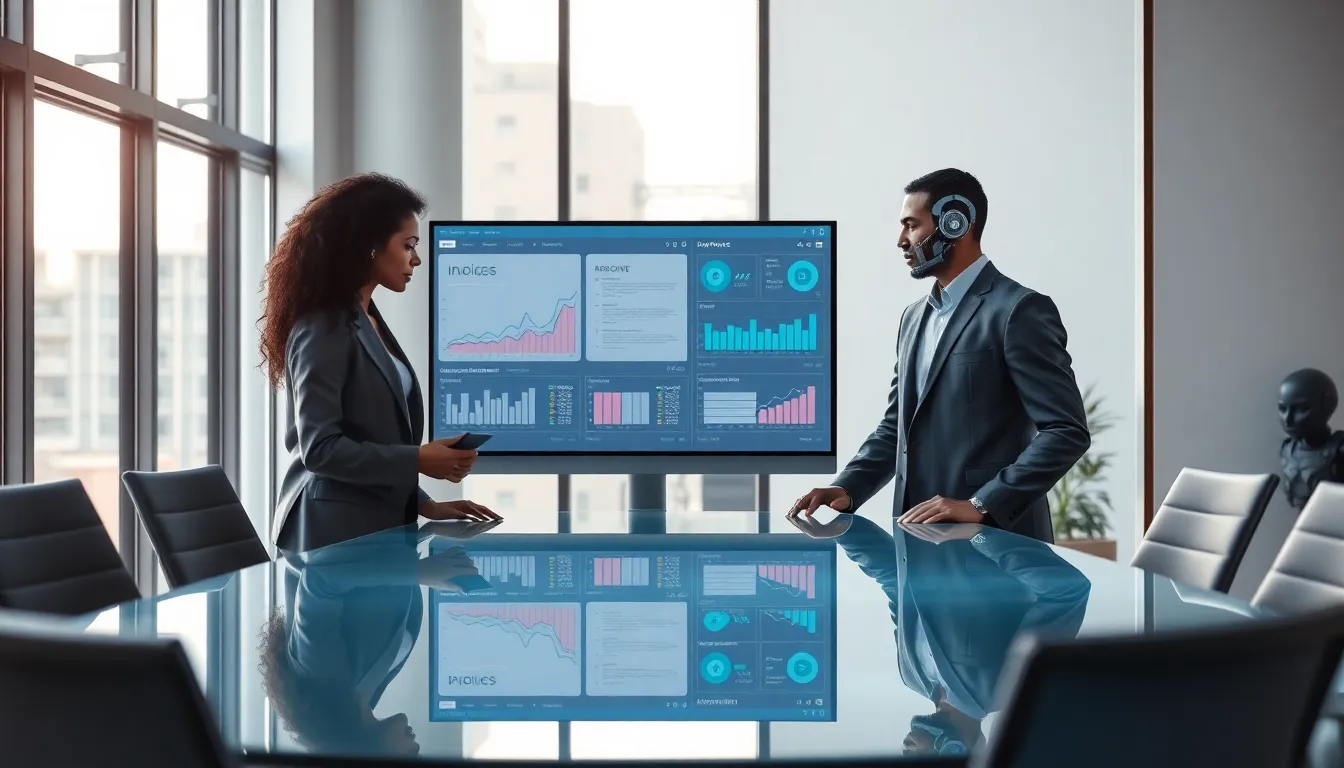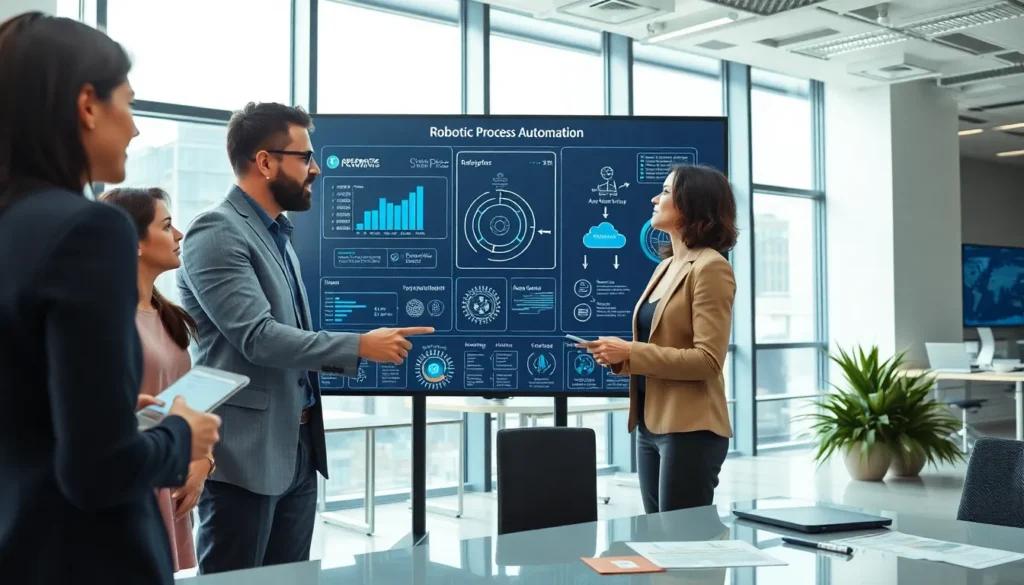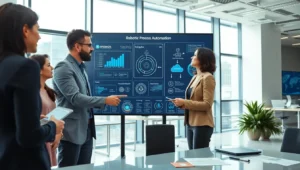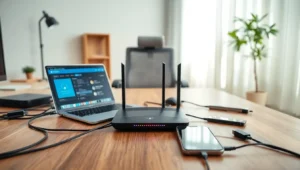Imagine a world where your coffee brews itself while your computer deftly handles all those repetitive tasks you dread. This isn’t science fiction, it’s the magic of Robotic Process Automation (RPA). In an era brimming with innovation, RPA stands at the crossroads of technological advancements. But how does it fit with other emerging technologies? Buckle up. This article takes you on a journey through the fascinating intersection of RPA, AI, machine learning, IoT, and blockchain. You won’t want to miss this exploration that is as enlightening as it is enjoyable.
Table of Contents
ToggleUnderstanding Robotic Process Automation (RPA)

Robotic Process Automation, or RPA, is the superhero of the digital workforce. It automates mundane tasks, allowing human workers to focus on high-value activities. Imagine bot-like assistants tirelessly processing invoices, entering data, or managing customer queries without ever taking a coffee break. RPA uses software bots programmed to perform repetitive tasks with precision. It acts like a digital glue, seamlessly integrating multiple software applications without the need for major overhaul, just good old efficiency. Companies are increasingly adopting RPA because it reduces operational costs, minimizes errors, and enhances productivity. This innovation is not just another tech trend: it’s a game-changer that boosts organizational agility.
The Relationship Between RPA and Artificial Intelligence
When we think of RPA, it’s easy to overlook its close cousin, Artificial Intelligence (AI). While RPA excels at automating structured, rule-based tasks, AI brings the power of decision-making and learning to the table. Picture RPA as a diligent intern processing paperwork, while AI is the wise mentor guiding critical decisions based on data. Together, they form a formidable duo. AI can enhance the capabilities of RPA by enabling intelligent decision-making processes. For instance, when combined, they can analyze large sets of data and make recommendations, creating a more powerful automated workflow. This partnership makes systems smarter and more capable of adapting to dynamic business environments.
Integrating RPA with Machine Learning
Now, let’s spice things up with Machine Learning (ML), another emerging technology that pairs beautifully with RPA. While RPA handles repetitive tasks, ML can analyze patterns from data to predict outcomes. This integration doesn’t just add a sprinkle of magic: it revolutionizes how businesses operate. For example, if a company utilizes RPA for data entry but encounters frequent data inaccuracies, ML can step in to identify and rectify these mistakes by learning from past errors. With this combination, organizations can create self-improving systems, bots that not only automate tasks but also learn and refine processes over time. Imagine the savings in time and resources when bots fix their mistakes without human intervention.
RPA’s Role in the Internet of Things (IoT)
Let’s shift gears and explore the intriguing realm of the Internet of Things (IoT). RPA has a critical role here as well. As various devices and sensors continuously generate data, RPA can be the bridge that connects this influx of information to actionable insights. Think about smart homes, your fridge notifying you when you’re low on groceries. RPA can automate the ordering process, seamlessly syncing with your preferred grocery store’s system to ensure you never run out of essentials. Besides, it can monitor systems, analyze data from IoT devices, and even trigger alerts or actions when thresholds are crossed. By automating these interactions, RPA not only improves efficiency but also enhances user experience, driving customer satisfaction to new heights.
Combining RPA with Blockchain Technology
Blockchain technology, known for its security and transparency, yet another emerging tech that can benefit from RPA. While blockchain handles secure transactions and data integrity, RPA can automate these processes to ensure seamless operations. Consider a scenario where contracts need to be verified using blockchain: RPA can automatically pull information, execute the verification, and update all relevant parties without manual intervention. Also, this combination ensures that all transactions are not only automated but also secure and tamper-proof. The blend of RPA’s automation prowess with blockchain’s transparency presents organizations with unprecedented opportunities for operational improvements.
Future Trends: RPA and Other Emerging Technologies
Looking ahead, the horizon is bright for RPA paired with other emerging technologies. Organizations are already exploring more sophisticated integrations, like RPA with AI-powered chatbots that can handle customer queries with human-like finesse. There’s also potential in predictive analytics, where machine learning models predict trends, and RPA automates the response strategies. In the financial sector, imagine RPA managing transactions while blockchain records them securely, all while AI provides analytical insights. The collaboration between these technologies will not just enhance operational performance, it will potentially lead to the creation of entirely new business models. Future workplaces will likely resemble science fiction, you’ll have virtual assistants, smart devices communicating wirelessly, and robust data analytics guiding every business decision.





